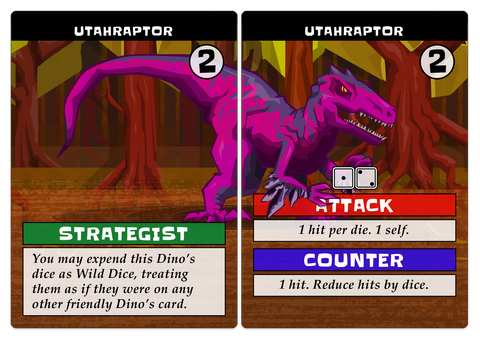Every time I do a Table Battles expansion, I add something new. This is as much for me as it is for the players. As of this writing I've put together over fifty scenarios spread across a base game, six expansions, and a magazine insert, and to prevent it from getting monotonous I've had to amuse myself with new toys and ideas.
Sometimes this is subtle, as in a new wrinkle to a reaction. For example, the English Civil War expansion had some Counterattacks that reduced the number of hits suffered by the number of dice on the card, a trick I've used ever since (including in Dinosaur Table Battles and next year's Kaiju Table Battles).

That set also introduced "Tactical Victory", an alternative victory condition that depends on the number of sticks your opponent has lost. That's a bit showier, but it allows me to play with the balance of a given scenario, and to better reflect battles where the outcome wasn't as decisive or obvious, where "who won" was more arguable. Probably if I had thought of it when I designed the preceding Gettysburg set, I would've used it for some of those battles. At any rate, I used it a couple of times in the following set, The Grand Alliance, and it features in every scenario in next year's Great Battles of Prince Charles Alexander of Lorraine.
In fact, a Tactical Victory is likely the best that our boy Chuck can hope for. This doesn't necessarily represent a "victory" in the traditional sense, but rather that an uncharacteristic stubbornness forced the enemy to pay dearly for it. At the very least he wouldn't have looked quite so hapless as he did historically.
In addition to those mechanisms from English Civil War, the new set also borrows a couple I came up with for The Grand Alliance. The flashiest of these are the "Links" shared by adjacent cards. So long as a card shares a link with another, it suffers one less hit on top of any reduction offered by a reaction. This stresses the importance of the integrity of your line, and also can be used to represent fortifications and the like. In previous scenarios, "attacking a strong defensive position" often meant that the attacker's die numbers were bracketed (i.e., they were limited to gaining at most one die per turn), which gave things a slower pace. Using links, especially in conjunction with "reduce hits by dice" reactions, allowed me to mostly dispense with this – and so you see far fewer brackets on the cards.
A couple scenarios in Grand Alliance also had some one-off effects that let you reassign sticks from one card to another, representing pivotal moments where a commander weakened their line in one spot to bolster it in another, usually as part of a final push that breaks the enemy line. I decided with this new set that I wanted that to be a core mechanic, which I call a Shift.
At the start of your turn, before your action phase, you can take a number of sticks from one card, placing them behind another. At the start of the following turn, those sticks will be added to that card. Performing a Shift will skip your action phase just as reacting would. However, reacting does not prevent you from Shifting. This gives the player who is on the defensive end of things a bit more to do while they're being clobbered.
But Shifting it just as important as an offensive maneuver – as a way of carrying out the kind of oblique attack that Frederick the Great excelled at. In this iteration of the series, if your attacking formation has at least three more sticks than its target, it inflicts an extra hit. It's an expression of sheer weight of numbers.
But both this ability, and the ability to shift, is limited by the unit type – Infantry may only shift sticks to Infantry and Cavalry to Cavalry, while this bonus hit is only a factor against enemy units of the same type. And you might be asking, "Amabel, how do you designate what type of unit it is?"
Well, my friends, hold onto your socks, because this expansion to Table Battles has illustrations! The finest Austrian and Prussian soldiers I could find in the public domain.


And I know what you're going to say, "But Amabel, people have been begging you to put art on the cards for literal years, and you've been stubborn and dismissive because 'I want the cards to be functional' and 'I can't find appropriate art for every topic' and 'I'm lazy', are you admitting that you were wrong", and no, absolutely not. All of those reasons are still true – if anything, I've gotten lazier – but in this case, the art is functional. It has a purpose, delineating a distinction that didn't exist in the series hitherto.
Will it exist in the future? Well, I can't make any promises, and I wouldn't get your hopes up, but neither am I ruling it out.

8 comments
I have just received this expansion. Allow me to congratulate with you for having realized, once more, an outstanding game.
Bruno
Thanks, Bruno. I just ordered the C3I issue.
Kirk Sellman
@ Kirk, “reply” sorry. The 2 scenarios are about ACW Battle of Gaines Mill and Med Battle of Bouvines. You can find some pictures on Boardgamegeek, I believe.
Bruno
Kirk, should you not have got a replay yet, It was in C3I magazine no. 32.
Bruno
Which magazine do you have a scenario inserted in?
Kirk Sellman